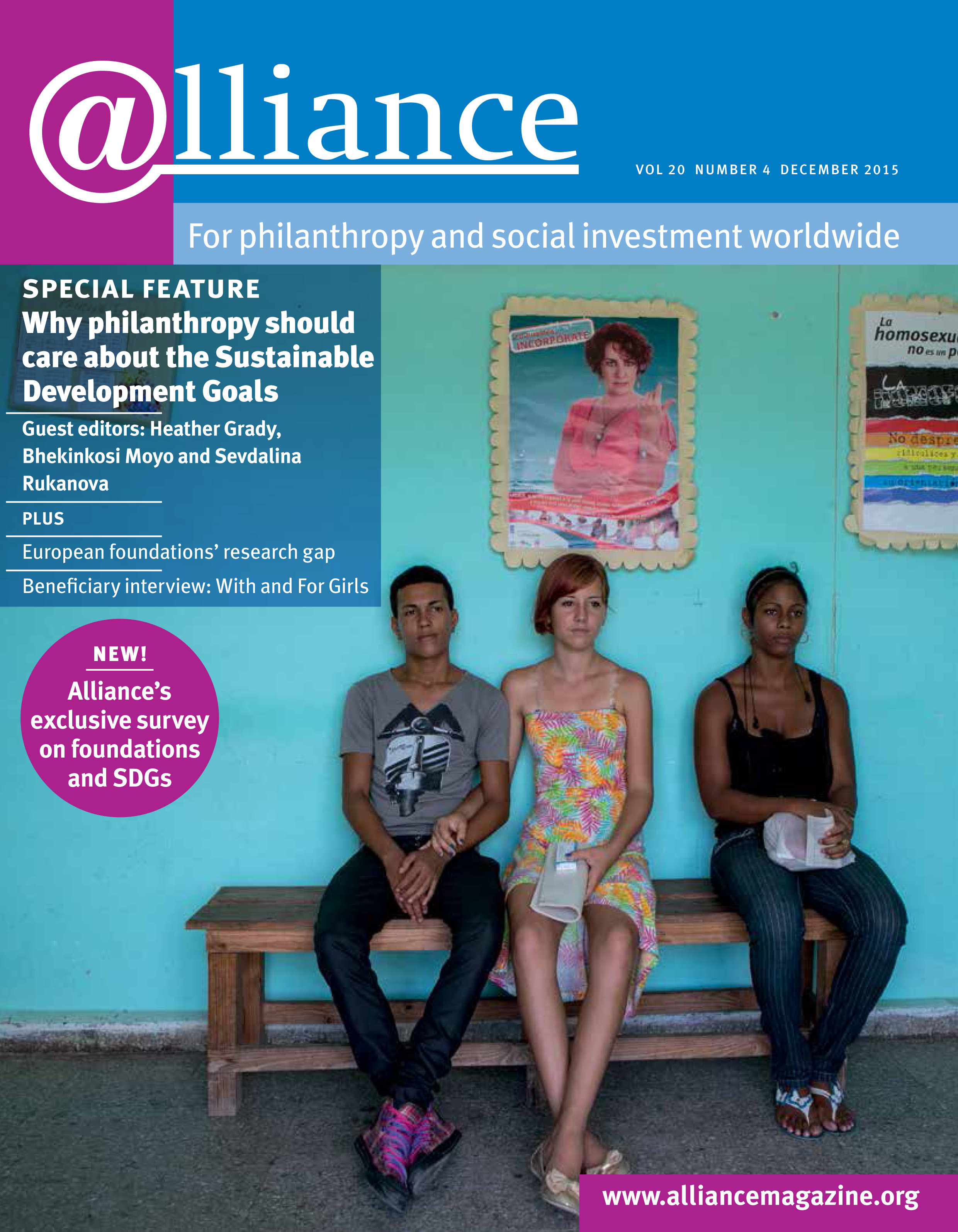Sustainable development goals (SDGs) are becoming buzzwords. I have been asked whether philanthropy institutions should participate in SDGs. I believe the philanthropy community should engage in any global initiative relevant to its work that contributes to the shared goal of creating a just and prosperous society.
The question we need to look at more is how we, as the philanthropy community, align our works with the global goals, whose implementation in the countries is spearheaded by national and sub-national governments.
The government and the philanthropy community have different approaches to address the issues targeted by the SDGs. It’s a fact we need to accept. If managed properly, however, the differences can actually incite powerful complementarity and innovation. However, the philanthropy community may need to be aware of a few cautionary notes:
The obsession with quantifiable targets should be avoided if we want to create meaningful and lasting impacts. The Millennium Development Goals (MDGs) were translated into quantifiable targets and indicators. The targets helped national and local governments work out their budgets and the public to monitor progress. The emphasis on figures and numbers hampered many potential impacts that could have been delivered, especially at local level, however.
We categorically need indicators and quantifiable measurement. We want to create community self-reliance and resilience as opposed to continuous dependence on external assistance. Thereby, SDG measurement needs to correct current practice and create a quality process as it produces outcomes such as sustainability and empowerment.
Measurement should not be made uniform for all countries participating in the SDGs. Indonesia, for example, is the largest archipelagic country, comprising more than 17,000 islands and hundreds of ethnic groups. If philanthropy organizations are expected to participate in SDGs, the government should allow them to continue local-friendly, culture‑sensitive approaches, most of which do not result in quantifiable outputs.
‘Philanthropy participation in SDGs should not just mean setting up a pooling fund. Philanthropy has a lot more to offer – its principles, values and approaches, as well as its human resources.’
The philanthropy community should contribute varied resources, not only finance. Volunteerism as the moral fibre of philanthropy has immense benefit for society, building trust, or gotong royong, a Bahasa Indonesian term that means working together selflessly. Even grants entail non-monetary support, such as affirmation and empowerment.
If governments wish philanthropy communities to engage vigorously in SDGs, the roles and contribution of philanthropy organizations, and civil society in general, need to be well understood. Philanthropy participation in SDGs should not just mean setting up a pooling fund. Philanthropy has a lot more to offer – its principles, values and approaches, as well as its human resources.
‘Government intervention is restricted to its annual budget cycle and often relies on single-shot, partial and target-specific approaches.Maybe make the quotes single column rather than full width for variety?’
The problems identified and targeted by the SDGs should be addressed through long-term programme and full-cycle intervention. The philanthropy community is accustomed to responding to such needs. Unfortunately, government intervention is restricted to its annual budget cycle and often relies on single-shot, partial and target-specific approaches. In light of these differences, the government needs to avoid putting philanthropy organizations in the same box as government units delivering SDG targets. Rather, the government needs to capitalize on philanthropy values and provide policy support to philanthropy organizations.
Philanthropy organizations have to work together to better their approaches and impacts in the areas targeted by SDGs. Collaboration among philanthropy organizations admittedly has not been strong. Some programmes overlapped while others were under- financed. An association that promotes philanthropy organizations’ interests will be key to overcoming an information shortage on philanthropy needs and actors within a country. The associations of like-minded philanthropy actors could encourage or initiate the establishment of a solid database as well as prompting conversations to map out philanthropy actors’ roles.
In a nutshell, the philanthropy community should emphasize alignment, not integration, when it comes to partnership with the government.
We have to strive to retain freedom to define our points to create impact. We have to keep our values as a community that puts compassion toward human beings and the earth first. Without these values, we will end up completing programmes while problems linger – until we have to create another set of global goals.
Franky Welirang is co-chair of the advisory board of the Association of Philanthropy Indonesia. Email franky.welirang@bogasariflour.com







Comments (0)